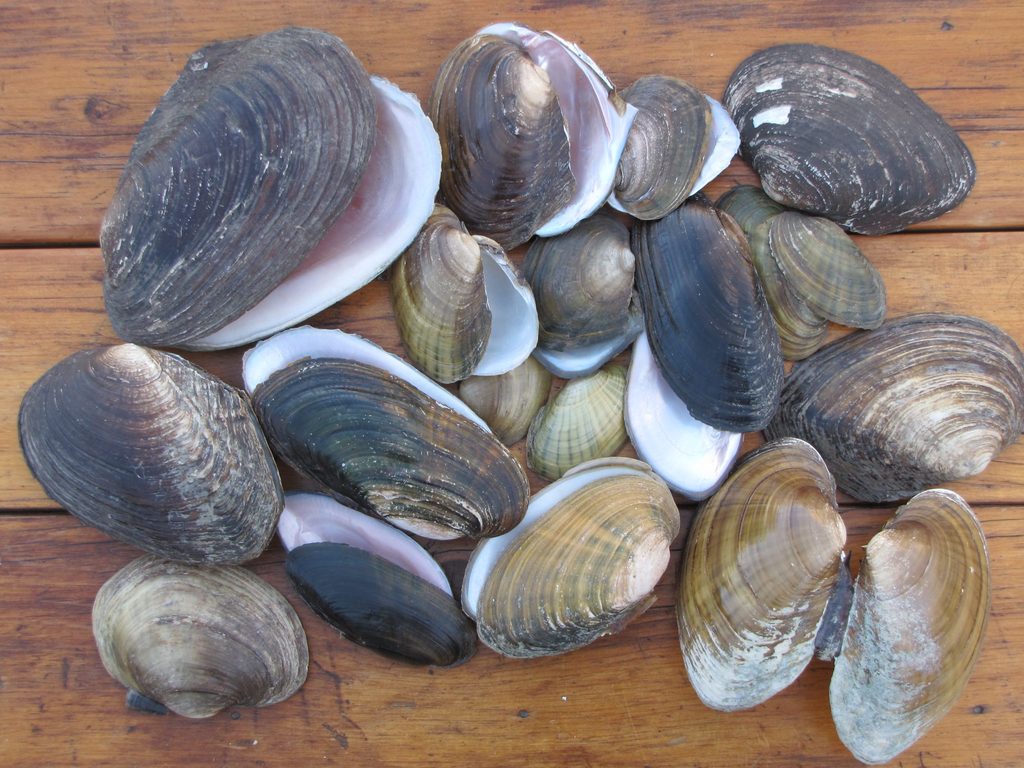
Freshwater mussels are a generally under-recognized and under-appreciated group of river inhabitants. They lie unobtrusively in the sediment along the bottom of waterways, small(ish), dark and sedentary. However, these underwhelming animals are, in reality, incredibly important for the ecology of riverine ecosystems. Mussels contribute to the functionality of the waterways they inhabit; they filter particles and microorganisms from the water for food, effectively controlling the nutrient dynamics; they stabilize the sediment and increase its water and oxygen content via burrowing; and they even provide a source of habitat for other organisms.
The Upper Mississippi River Basin (to which our very own Cannon River belongs) was once a hot spot for freshwater mussel biodiversity. There are around 300 species native to North America (15 of which have been found in the Cannon River) but nearly 70% of those species are now extinct or vulnerable to extinction, making freshwater mussels one of the most rapidly declining faunal groups worldwide. This decline is thought to be due to the species sensitivity to pollution and water-quality degradation and their susceptibility to dispersal disruption by habitat destruction/fragmentation, a result of their unique life cycle, in which the “larval” stage of mussels live in the gills of fish, acting as parasites, until eventually dropping off into the sediment to grow as filter-feeding adults. The future of the mussels in the Cannon River and in the rivers across North America is uncertain, but just because they are generally out of sight doesn’t mean they should also be out of mind. The conservation of these influential species (such as by improving water quality and adding fish ladders to dams) must be recognized if we are going to attempt to maintain healthy, functional river ecosystems.
–Emily Buckner ’15, for the Cole Student Naturalists
Add a comment